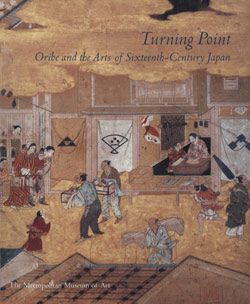Tsujigahana Textile with Horizontal Stripes, Flowering Plants, Fans, Snowflakes, Clouds, and Bellflowers
Not on view
Probably once part of the back of a kosode (predecessor of the modern kimono), this tsujigahana textile panel has four ornamented horizontal bands that alternate in brown and white. The term tsujigahana, translated literally as “flowers (hana) at the crossroads (tsuji),” evokes images of delicate blossoms amid pathways. While these motifs survive in textile fragments, the precise meaning of tsujigahana remains unclear. Late Muromachi (1392–1573)- and Momoyama-period written sources used the word in descriptions of garments, but twentieth-century scholars redefined it as a textile technique: stitch-resist dyeing and ink painting on a lightweight, plain-weave ground, often further embellished with gold-leaf imprinting and embroidery.
Due to rights restrictions, this image cannot be enlarged, viewed at full screen, or downloaded.


